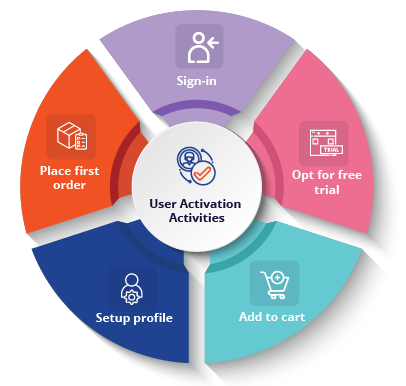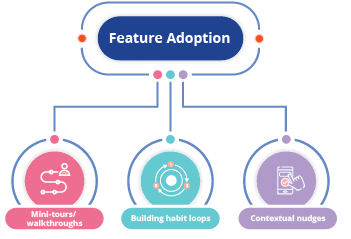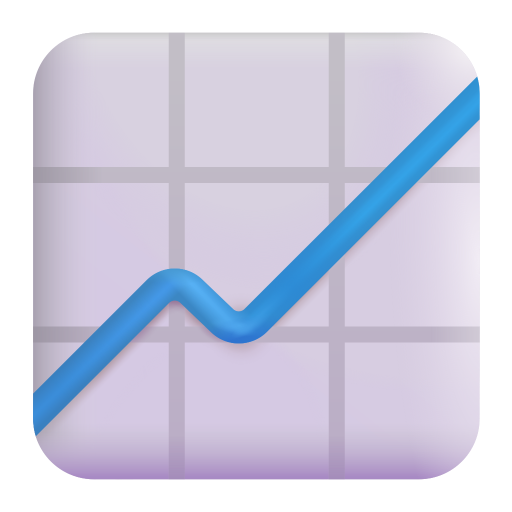Product adoption is a key piece in any app’s growth journey. In the larger scheme of things, product adoption is the process of users becoming aware of your product, finding value in it, and using it actively. And it’s not just a one-off situation but something that takes place at every stage of the user journey, right from onboarding to retention.
Improving product adoption has a thumping impact on every important performance metric – user engagement, feature adoption, retention rates, CLTV, CAC, and overall product experience. Product adoption defines whether a product is a success or not, and if users are not using your product (app), growth is out of the question precisely why product managers cannot afford to miss out on it.
We dive into 6 proven strategies to help your users reach their goals and speed up your product adoption process in this blog.
Ways to drive product adoption:
1. Create contextual onboarding journey
Seamlessly onboarding new users enables you to communicate your app’s value to first-time users. The better users understand your app, the more likely they’re to stick around.
Onboarding drives product adoption only when it is contextual. While emails are a timeless strategy, the onboarding journey within the app – contextual guidance inside the app is what triggers users to start using your app actively. The way you introduce features to users, the number of steps a user needs to take to actually start using the app and getting the guidance when needed – all of this is what makes onboarding effortless for users.
This process doesn’t end once users create their accounts. Instead, it is a continuous process that begins from the first touchpoint and continues until the user makes their first transaction.
Again, onboarding is not just limited to new users. It is essential to onboard existing users in case of new feature launches or feature updates. This is what makes users adopt the product easily at any stage of the user journey.
To ace the onboarding process, rely on app walkthroughs. No-code contextual walkthroughs bring in faster activation. What makes contextual walkthroughs successful is that they’re displayed to users when it’s most relevant. As compared to complex walkthroughs that tend to overwhelm users by introducing multiple features at one-go, contextual walkthroughs are much more meaningful. They’re based on users’ specific needs and goals. What makes it a super tool for onboarding users is the ease and convenience (zero coding efforts) with which product managers can build these walkthrough journeys and trigger it to the right user segments at the right time.
Onboarding helps you improve your app experience, convert the right users at the right time by leveraging high intent moments, and drive feature discovery and adoption. This leads to higher product adoption.
Related read: https://netcorecloud.com/ebook/best-practices-for-app-onboarding/
Take Spotify’s onboarding process, for example. Users’ expectations from Spotify are to listen to their favorite songs in their language, play music for free, and get recommendations based on the music they love. Spotify onboards them by guiding users to choose their preferred language, the music they love, and artists to listen to. Finally, Spotify proceeds to offer music for free. That sums up a seamless onboarding process.
2. Identify critical user activation activities.
Around 75% of the users uninstall an app in the first week itself. The lack of an optimized activation process is the reason for this rate. If there is no proper activation process, the user will move aimlessly in the app. In such cases, they will fail to find the value in your product and uninstall it sooner or later.
You can solve this problem by implementing an activation process. When your users sign in for the first time, you need to guide them towards the following action.
The first step here is to visualize the path users take on the app and what are the core actions you expect your users to perform. These core actions must solve every individual user’s pain point and communicate your app’s value.

For this, trigger multiple nudges that make the user aware of your product’s key features. An interactive user interface coupled with contextual nudges reduces the time taken by the user to perform the first critical task. Also, you need to gradually reveal the more complex functions of your apps to avoid overwhelming the users. By creating a thorough walkthrough of the product, you can massively enhance the product adoption rate.
When product managers visualize the ideal user path right, they can make customers move faster on the app leading to quicker conversions. This means highlighting the value at the right time without any delay through contextual nudges.
Here are a few activation use cases.
- For an Ed-tech app, the core action could be to start a course or complete the first lesson. To drive user activation, you must highlight the relevant courses to users.
- In an app like Uber, the core action is to get the user to book their first or next ride. Guiding users to choose the pickup point and the destination location could be one way of activating them. The other could be prompting users about discounts they could get on the first/next ride.
- One of the core actions in a health-tech app is to get the user to place an order for medicines. Or it could be booking the first lab test/consultation session. Deploying a walkthrough that guides users on how to perform these actions leads to quicker activations.
3. Find and eliminate friction points
Product friction prevents the user from adopting the product. This can be time-draining navigation to find the right features, complex-to-use features, locating the right features, and more. To increase product adoption, you need to identify the areas where most users are struggling and rectify those areas to make it easier to navigate your app.
The simplest example is of apps that make sign-ups mandatory and lengthy and the rest that help users get started on the app quickly and avoid the whole hassle of signing up. It’s evident that even the slightest difference in the number of steps can impact activation largely.
A great way to find friction points and rectify them right on the track is to leverage insight-driven behavioral analytics.
When done right, behavioral analytics help you with –
- Funnel analysis to identify where your customer’s’ drop-off, and discover real-time journey pain points.
- User path Analysis – to understand what path the user is taking and isolate points of frictions causing drop-offs,
- Track key metrics like MAU, the average session count for different user types, across platforms, user segments, and more.
4. Boost feature adoption
Communicating critical features (relevant to users) of your product to your users is the key to feature adoption. Feature adoption encourages the users to engage with the feature and re-use them to increase their average app usage time. The feature adoption loop ends when the users start constantly using those features to their benefit. The more features your customers use, the more value they will find in your product. Better feature adoption directly increases product adoption.

Creating mini-feature tours after updates, reinforcing habit loops, and leveraging nudges to help users discover these features can significantly boost feature adoption.
Users who don’t leverage critical features are most likely to churn. Identifying and nudging these users to adopt a new feature will help reinforce habit loops. Once users engage with features that best solve their problem, they will keep coming back to it which creates the habit loop.
When Instagram started rolling out their new Reels feature, they treated it just like a product launch. The app had extensive walkthroughs and smart nudges users to start using the feature. Now, within a year, that single feature has revolutionized the app and has been bringing in more new users.
5. Engage users within the app
Driving more in-app user engagement accelerates product adoption. Contextual and personalized email marketing and push notifications can drastically increase user engagement, tempting the user to open the app. But your job doesn’t end there. Engagement efforts must continue even when the user has launched the app. Nudges like tooltips, beacons, and spotlight nudges capture users’ attention and direct them towards relevant features. This engages them and increases their time on the app.
FITTR, for instance, uses a series of nudges in their walkthroughs. They highlight the actions which the user needs to do first. They then continue the walkthrough by highlighting (leveraging spotlight nudges) other essential features such as their notification button, the discovery page, and workout plans. At the end of their walkthrough, they highlight the tools (with tooltips) which are comparatively more difficult to handle.
Here’s a quick read on top engagement strategies: https://netcorecloud.com/en/blog/7-best-practices-for-app-user-engagement/
6. Run low-code A/B tests
For creating winning product experiences that drive product adoption, experimentation is a no brainer. You will need to run multiple controlled UI tests with different groups of users and monitor metrics based on your specific goals – conversion, engagement, retention, and others. Different variations of CTAs, text versions, types of nudges, nudge journeys, and more use cases can be put to test. Based on the results, you then deploy the winning variant to the larger audience. The results give a direct insight into what makes users tick and engage more with your product.
untilInstead, it is
Conclusion
All these steps can be easily condensed into one sentence – understanding customer behavior. If you want to increase your product adoption, you need to understand what makes your customers tick. You need to identify the processes that are encouraging the customers to use your app. Meanwhile, you need to eliminate all the processes that have a negative impact on user experience.
This also brings us to the point that product experience plays a significant role in product adoption. It’s the glue that holds the entire user experience together. Every touchpoint within the app has a massive impact on the way users will interact and engage with your product. The more engaging the experience, the better is the product adoption.
To make it easy for you to deliver on your promise of a great product experience, we have a no-code product experience platform at your disposal. The platform offers features like no-code contextual nudges & walkthroughs, A/B testing, and no-code segmentation. The minimum developer and engineering effort steering the whole no-code platform helps apps drive app growth rapidly. We’d be happy to conduct a 1:1 free consultation on how Netcore’s Product Experience platform can drive key business goals for you. Feel free to talk to us!
 Holiday Sales Are Won Now — Grab the 2025 Holiday Marketing Guide to Unlock More Revenue.
Holiday Sales Are Won Now — Grab the 2025 Holiday Marketing Guide to Unlock More Revenue. 








